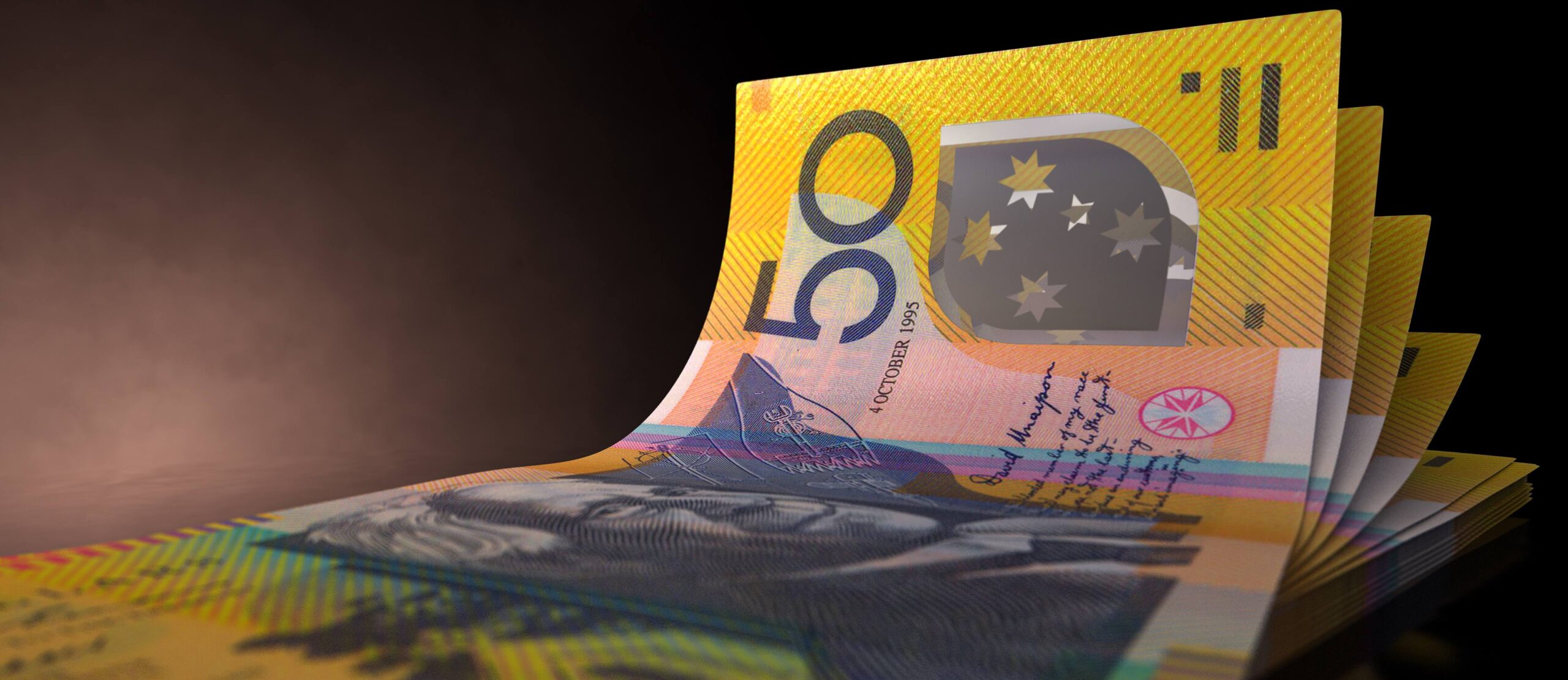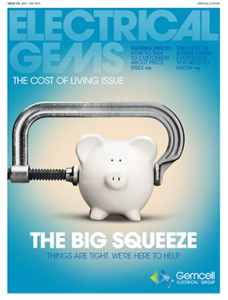Out Now
The Infrastructure Issue
Current Issue
The Infrastructure Issue
JUN - JUL 2025

Want to know more about the ‘cost of living crisis’ but don’t know who to ask? We’ve got you covered
Unless you’ve been living under an incredibly huge rock for the past year or so, and you’ve been living there with a good 12-month supply of food and liquid refreshments, then you won’t have failed to notice that the price of pretty much everything is going up, up, up.
Fuel? Up. Milk? Up. Toilet paper? Up. The CD of Shannon Noll’s Greatest Hits? Ok, there’s always an exception to the rule.
But still, on the whole, prices are climbing, and you’ll have no doubt witnessed that in a professional capacity as well as during your weekly grocery shops.
The news headlines scream, ‘There’s a cost of living crisis’! Interest rates are at generational-high levels and the vast, vast majority of us are feeling the pinch.
The question many of us come back to – even if it’s just in our own minds – is: why the hell is this happening?
It seems as if we’ve just got to accept that things are more expensive without understanding why. We’ve just got to accept our mortgage repayments have increased by $1000 without being told how that’s going to help the situation.
So, to save you from asking that ‘why’ question (and let’s be truthful here, most people don’t know the full answer!) we’ve delved into this from the very start.
Strap yourselves in…
Simply put, COVID and Putin. Thanks guys.
“The financial crisis is currently happening because consumer costs (the costs that we pay for goods and services) are up and rising dramatically,” says Derek Sall, Founder and Lead of Life And My Finances.
“For the most part, people’s earnings haven’t increased fast enough to keep up with their inflated costs.”
But why are those consumer costs rising? It’s a supply and demand issue. If there’s an increase in demand or a shortage of supply, prices will rise.
Thanks to COVID, we saw both. Manufacturers struggled to make and ship products due to lockdowns and illness, the supply chain was disrupted and therefore supply slowed.
And post-COVID, people have been keen to get out there and spend money – increasing demand.
That’s why prices are going up everywhere – in all likelihood including your local electrical wholesaler.
“The spending revenge on the back of COVID is a major contributory factor to the high prices we are experiencing today,” says Sok Lay, a Financial Advisor at Master Your Money Now.
Derek elaborates: “With Covid, producing products was more difficult because of the shutdowns, so fewer products were produced, which meant they could fetch a higher price. And then recently, demand for products went up because of pent-up demand coming out of isolation and because of an increased money supply that was handed to the people from the government.”
Additionally, the war in Ukraine has disrupted energy supply chains, meaning global energy prices have also increased significantly.
Still with us? Good.
Across the world, governments measure inflation and like to keep a cap on it. Essentially, when consumer prices go up, the ‘real’ value of money goes down, as does the value of savings and the value of debts.
Low inflation contributes to an economy’s stability and is more attractive from an investment perspective – higher inflation means our purchasing power is reduced, investments are worth less and workers need more money, which in turn further increases the prices businesses need to charge.
In Australia, at the last count (May 2023), year-on-year inflation was 5.6 per cent, a little down on the previous months, but still way above the Reserve Bank’s 2-3 per cent annual inflation target.
Of course, as we’re all very well aware, the RBA’s answer to this problem is to jack up the interest rates, which ultimately means that people with mortgages (serious amounts of debt) are significantly worse off, while those with huge savings get richer and richer.
“The government can combat inflation mainly by increasing interest rates,” explains Derek.
“It’s the most effective way to impact inflation immediately before it becomes a bigger issue. Increased interest rates slow down demand by slowing down borrowing – people/businesses might love borrowing at 2 per cent interest, but they’re less likely to borrow at 6 per cent interest.
“With decreased demand, prices should stop rising at such a high rate. This brings inflation back to where it should be, at around 2 per cent.
Sok says that increasing the interest rates is like turning down the heat.
“Think about burning a candle,” she says.
“If we light the candle normally, it’ll burn at the normal speed [2-3 per cent inflation].
“However, as inflation increases, it is the equivalent of more and more people lighting lighters and holding them next to the candle – all of a sudden, the candle is melting faster than is sustainable.”
So, what’s the outlook for the next few months? The RBA has said it’s a ‘whatever it takes’ approach to reducing annual inflation back to 2-3 per cent, so until it gets there, we could see more interest rate rises – although, at the time of writing, only ANZ is predicting another interest rate rise in 2023.
Derek warns, however, that prices won’t go back to what they were a year ago.
“The intent isn’t to get prices back down to where they were a year ago. The goal is to slow the increase, so don’t expect the cost of groceries to go down. They’re likely here to stay.”
So there you have it – the sooner we all stop spending, the sooner the interest rates will stop rising, and hopefully begin falling.
Keep up to date with our latest news and competitions by subscribing to our regular newsletter.

Issue 183
OCT - NOV 2024

Issue 182
AUG - SEPT 2024

Issue 181
JUN - JUL 2024

Issue 180
APR - MAY 2024

Issue 179
FEB - MARCH 2024

Issue 178
DEC 2023 - JAN 2024

Issue 177
OCT - NOV 2023

Issue 176
AUG - SEPT 2023

Issue 175
JUN - JUL 2023

Issue 174
APR - MAY 2023

Issue 173
FEB - MAR 2023

Issue 172
DEC 2022 - JAN 2023

Issue 171
OCT - NOV 2022

Issue 170
AUG - SEPT 2022

Issue 169
JUN - JUL 2022

Issue 168
APR - MAY 2022

Issue 167
FEB - MAR 2022

Issue 166
DEC 2021 - JAN 2022

Issue 165
OCT - NOV 2021

Issue 164
AUG - SEPT 2021

Issue 163
JUN - JUL 2021

Issue 162
APR - MAY 2021

Issue 161
FEB - MAR 2021

Issue 160
DEC 2020 - JAN 2021

Issue 159
OCT - NOV 2020

Issue 158
AUG - SEPT 2020

Issue 157
JUN - JUL 2022

Issue 156
APR - MAY 2020

Issue 155
FEB - MAR 2020

Issue 154
DEC 2019 - JAN 2020

Issue 153
OCT - NOV 2019

Issue 152
AUG - SEPT 2019

Issue 151
JUN - JUL 2019

Issue 150
APR - MAY 2019

Issue 149
FEB - MAR 2019

Issue 148
DEC 2018 - JAN 2019

Issue 147
OCT - NOV 2018

Issue 146
AUG - SEPT 2018

Issue 145
JUN - JUL 2018

Issue 144
APR - MAY 2018

Issue 143
FEB - MAR 2018

Issue 142
DEC 2016 - JAN 2017

Issue 141
OCT- NOV 2017

Issue 140
AUG - SEPT 2017

Issue 139
JUN - JUL 2017

Issue 138
APR - MAY 2017

Issue 137
FEB - MAR 2017

Issue 136
DEC 2016 - JAN 2017

Issue 135
OCT - NOV 2017

Issue 134
AUG - SEPT 2016

Issue 133
JUN - JUL 2016

Issue 132
APR - MAY 2016

Issue 131
FEB - MAR 2016

Issue 130
DEC 2015 - JAN 2016

Issue 129
OCT - NOV 2015

Issue 128
AUG - SEPT 2015

Issue 127
JUN - JUL 2015

Issue 125
APR - MAY 2015

Issue 125
FEB - MAR 2015

Issue 124
DEC 2014 - JAN 2015

Issue 123
OCT - NOV 2014

Issue 122
AUG - SEPT 2014

Issue 121
JUN - JUL 2014

Issue 120
APR - MAY 2014

Issue 119
FEB - MAR 2014

Issue 118
DEC 2013 - JAN 2014

Issue 117
OCT - NOV 2013

Issue 116
AUG - SEPT 2013

Comments (0)
Write a Comment